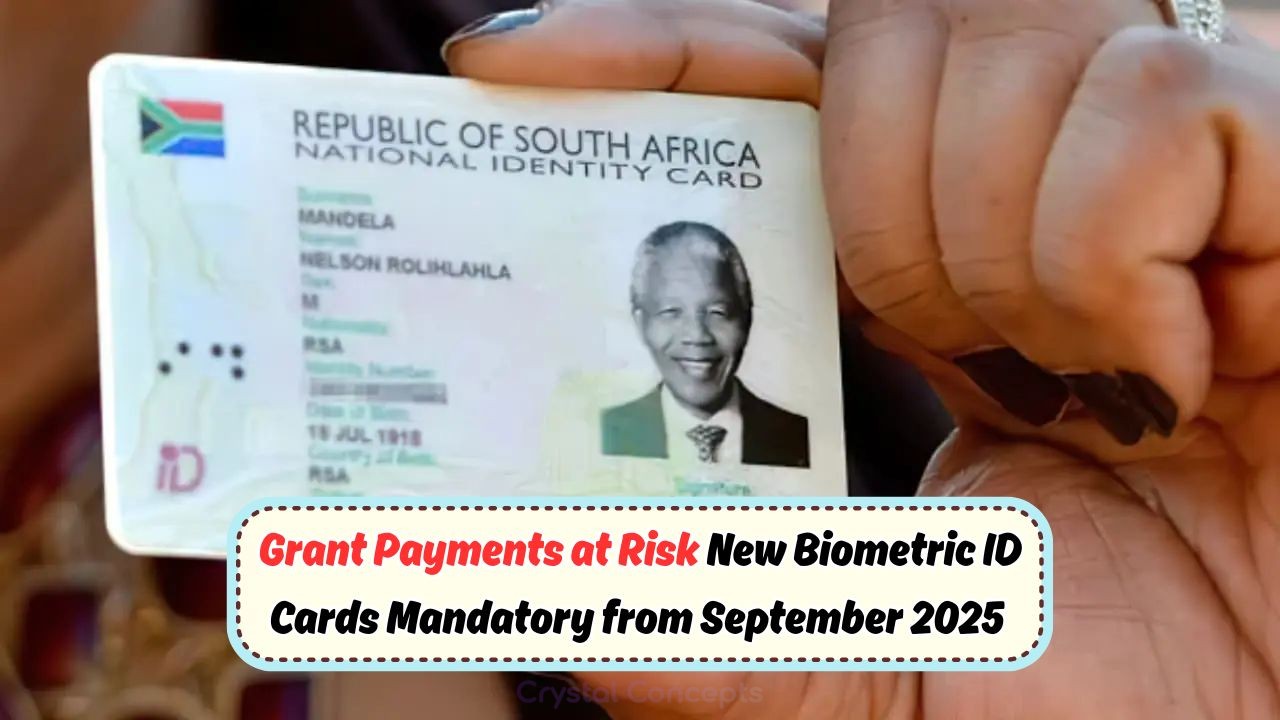Biometric IDs for Grant Payments in South Africa: As South Africa enters September, the landscape of social grant payments is undergoing a significant transformation. The South African Social Security Agency (SASSA) has announced that biometric identification will now be an essential requirement for beneficiaries to receive their grants. This move is aimed at enhancing security and reducing fraudulent claims, ensuring that financial aid reaches those who genuinely need it. With millions relying on these grants for their daily sustenance, the introduction of biometric IDs is set to streamline the payment process and safeguard against identity theft, thus instilling confidence among recipients.
Understanding the Importance of Biometric IDs in Grant Payments
Biometric identification is not just a buzzword in technological circles; it is a robust tool for securing identities. By using unique physical characteristics such as fingerprints or facial recognition, biometric IDs provide a level of security that traditional methods cannot match. In the context of South African social grants, this means a more reliable way to confirm the identity of beneficiaries, thereby minimizing instances of fraud. The South African government is committed to ensuring that every rand allocated for social grants is used appropriately and reaches the intended recipients.
- Enhances security and reduces fraud.
- Ensures accurate beneficiary identification.
- Facilitates efficient grant distribution.
- Builds trust in the social security system.
- Prevents identity theft and misuse.
How Biometric IDs Will Be Implemented in South Africa
The implementation of biometric IDs for grant payments will be a phased process. Initially, beneficiaries will be required to register their biometric details at designated centers across the country. This includes capturing fingerprints, facial images, or iris scans. The collected data will be securely stored and used to verify identities during grant disbursement. The system is designed to work seamlessly with existing payment methods, ensuring a smooth transition for current beneficiaries. SASSA has also set up a comprehensive support framework to assist those unfamiliar with biometric technology, emphasizing inclusivity and accessibility.
 August 6 Update: SASSA Boosts Child Support to R560, But Beware of These Cancellation Errors
August 6 Update: SASSA Boosts Child Support to R560, But Beware of These Cancellation Errors
| Phase | Action | Timeline | Outcome |
|---|---|---|---|
| 1 | Biometric registration | September – November | Data collection |
| 2 | Integration with payment systems | December – January | System testing |
| 3 | Nationwide rollout | February onwards | Full implementation |
Challenges and Opportunities in Adopting Biometric IDs
While the introduction of biometric IDs presents numerous benefits, it also comes with challenges. Concerns about data privacy and the protection of personal information are prevalent among beneficiaries. To address these issues, SASSA is working closely with cybersecurity experts to implement stringent data protection measures. Additionally, there is an opportunity to educate the public about the advantages of biometric technology, which can extend beyond grant payments to other areas such as banking and healthcare. By embracing this technology, South Africa can lead the way in secure identity management.
 Don't Miss Out: SASSA Grants Increase to R2,315 This August—Act Now to Secure Your Payout!
Don't Miss Out: SASSA Grants Increase to R2,315 This August—Act Now to Secure Your Payout!
- Data privacy concerns.
- Technical infrastructure challenges.
- Public education and awareness.
- Potential for broader applications.
- Need for ongoing support and training.
Comparing Biometric ID Systems Globally
Globally, biometric ID systems have been successfully implemented in various sectors, revolutionizing how identities are verified. Countries like India have been pioneers in using biometric data for social welfare schemes through the Aadhaar program. This initiative has drastically reduced fraud and improved service delivery efficiency. In Europe, biometric passports are now standard, facilitating secure international travel. South Africa’s adoption of biometric IDs for grant payments is a step towards aligning with global best practices, ensuring that the country remains at the forefront of technological advancements in social security.
| Country | Biometric Use | Impact | Lessons |
|---|---|---|---|
| India | Aadhaar program | Reduced fraud | Comprehensive rollout |
| USA | Passport control | Enhanced security | Public-private collaboration |
| UK | Healthcare ID | Improved efficiency | Data privacy focus |
Preparing for the Transition to Biometric IDs
For beneficiaries, preparing for the transition to biometric IDs involves understanding the new requirements and ensuring that their biometric data is accurately captured. SASSA is encouraging early registration to avoid last-minute rushes and ensure a smooth transition. Communication channels have been set up to provide information and resolve queries, including SMS updates and dedicated helplines. The success of this initiative relies on the cooperation and participation of all stakeholders involved, from government agencies to the beneficiaries themselves.
- Early registration is encouraged.
- Information dissemination via SMS.
- Dedicated helplines for support.
- Community engagement initiatives.
- Feedback mechanisms in place.
FAQs on Biometric IDs for Grant Payments
What are biometric IDs?
Biometric IDs use unique physical characteristics like fingerprints for identification.
Why are they required for grant payments?
They help ensure that grants reach the correct beneficiaries by preventing fraud.
How do beneficiaries register for biometric IDs?
Registration can be done at designated centers set up by SASSA.
What measures are in place to protect personal data?
Stringent data protection protocols have been enacted to safeguard personal information.
Will this affect how grants are received?
The biometric system is designed to integrate with current payment methods for seamless processing.








